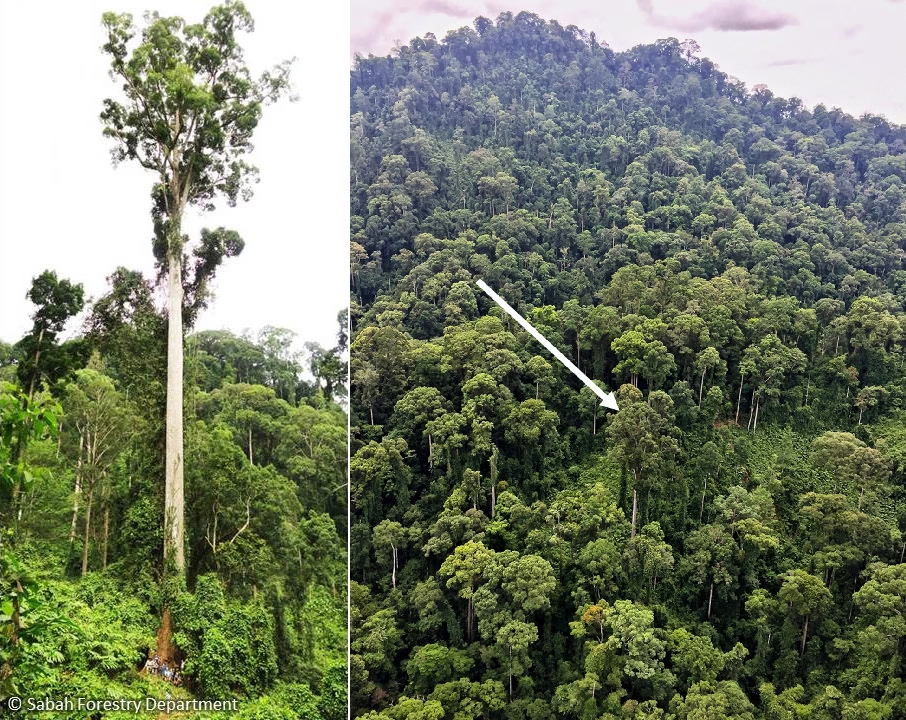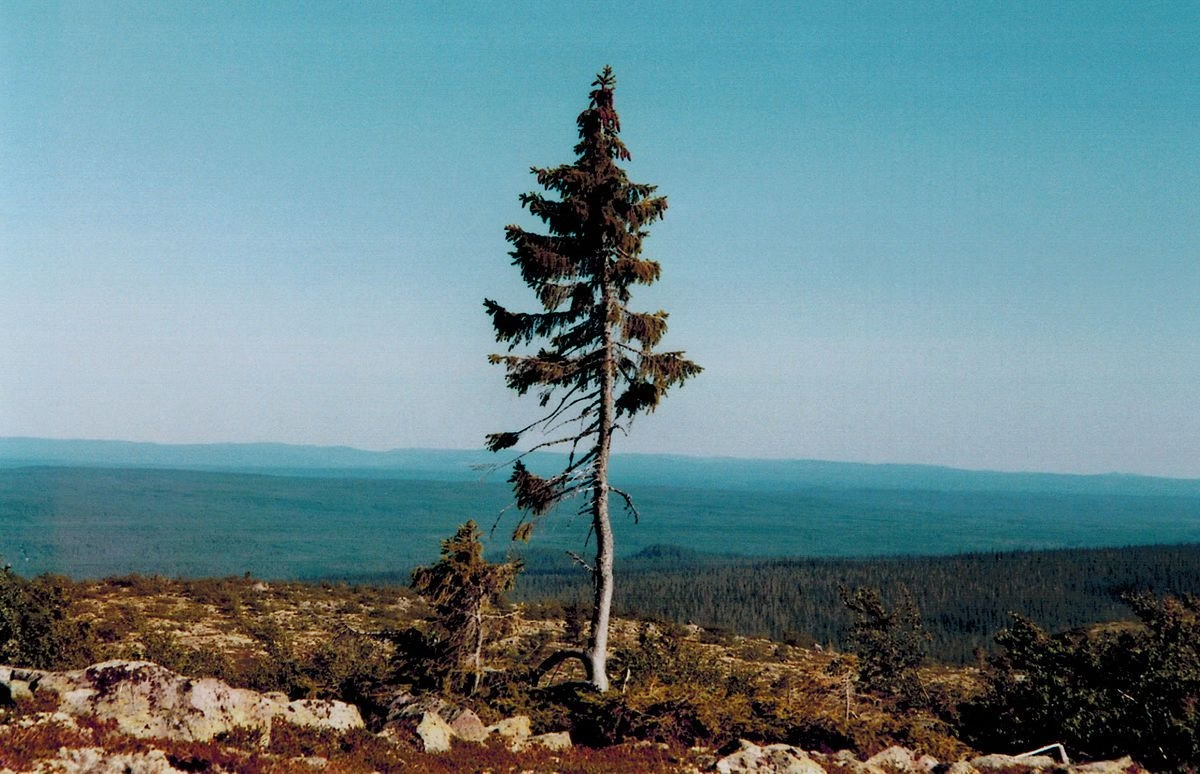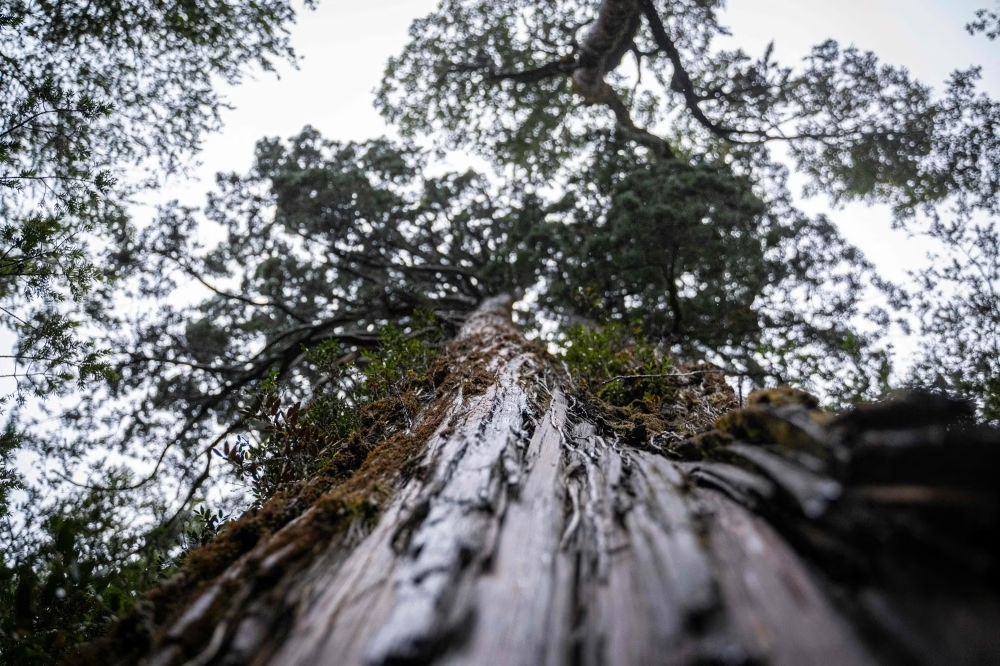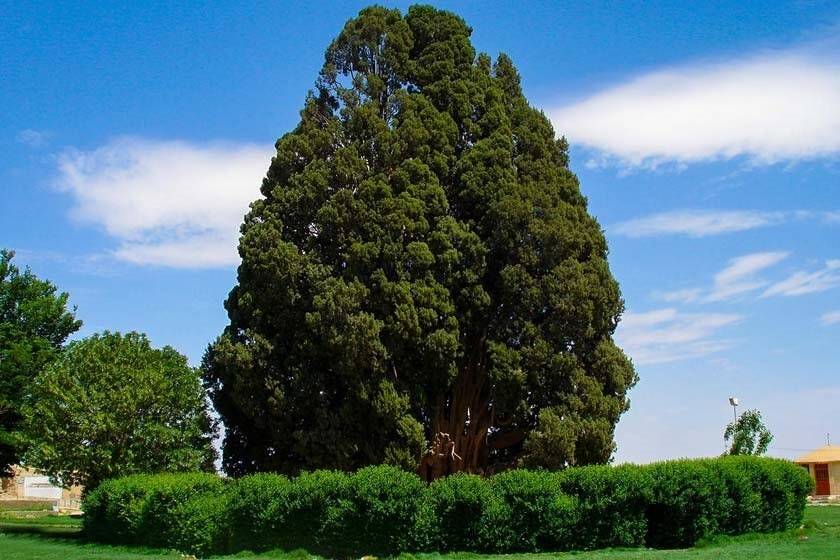
Malaysia proudly hosts the world’s tallest tropical tree, the Yellow Meranti (Shorea faguetiana). This majestic species has reached a recorded height of 100.8 meters, with the tallest known specimen located in the pristine rainforests of the Danum Valley Conservation Area in Sabah, East Malaysia. The Yellow Meranti is a member of the Dipterocarpaceae family, a dominant group of trees in Southeast Asian rainforests. The Danum Valley, a protected area renowned for its biodiversity, provides an ideal habitat for these giants to flourish. Image source: My Sabah/Sabah Forestry Department
Read these first:
- Childhood Memories: Part 28 – Revisiting Grandma’s Old Neighbourhood With Google Street
- Trip to Amazing Chennai 2010: Part 5 – Crazy Traffic in Chennai Streets
- Joke 101: How An Angel Ended On Top Of The Christmas Tree
- Nature 101: On A Mission To Find Mysterious Green Bird
- Personal Trip 101: One Day Drive To Lush Green Sekinchan Part 1
Introduction to Giant Trees
Giant trees are remarkable organisms that showcase nature’s grandeur and play critical roles in their ecosystems. These trees, often towering above their surroundings, possess distinctive characteristics that set them apart from their more diminutive counterparts. Typically, giant trees are defined by their impressive height, expansive canopies, and thick, sturdy trunks. Their significant stature allows them to compete effectively for sunlight, which is essential for photosynthesis and growth. This competition often results in ecosystems that are rich in biodiversity, as these towering giants provide habitats for various species of flora and fauna.
The ecological significance of giant trees extends beyond their physical dimensions. They serve as vital carbon sinks, sequestering large amounts of carbon dioxide from the atmosphere, which helps mitigate climate change. Their vast root systems stabilize the soil and prevent erosion, while their canopies provide shade and moisture, benefiting understory plants and animals. Additionally, giant trees contribute to nutrient cycling within their ecosystems, offering essential nutrients to surrounding plants through their fallen leaves, seeds, and decomposing wood.
Globally, different types of giant trees can be found, each contributing uniquely to the environment. Examples include the towering Redwoods of California, known for their remarkable height, and the massive Baobabs of Madagascar, famed for their distinctive shapes and longevity. The diversity among these species emphasizes the varying ecological roles that giant trees fulfill, making them a focal point for conservation efforts worldwide. Recognizing the importance of these majestic giants is essential, as their preservation directly impacts the health of our ecosystems.

Hyperion is a coast redwood tree (Sequoia sempervirens) located in Redwood National Park, California, and it holds the title of the world’s tallest known living tree, with a recorded height of 116.07 meters (380.8 feet). Discovered in 2006, this remarkable tree is estimated to be between 600 and 800 years old. Due to the environmental damage caused by excessive tourism, including soil compaction and habitat disruption, Redwood National Park has taken measures to protect Hyperion by restricting access to its immediate vicinity. Image source: Youtube
1. Hyperion: The Tallest Tree on Earth
Hyperion, a majestic coastal redwood (Sequoia sempervirens), holds the distinction of being the tallest living tree on our planet. Discovered in 2006 by naturalists Chris Atkins and Jerry Dodrill in a secluded area of California’s coastal range, this remarkable tree reaches an astounding height of approximately 379.7 feet (115.7 meters). Its towering stature is not merely a testament to its age, which is believed to be between 600 and 800 years, but also to the specific environmental conditions found in its natural habitat.
Located in the heart of the California redwoods, Hyperion thrives in a temperate climate characterized by ample rainfall and fertile soil. These factors contribute to the robust health and growth of such giant trees. Coastal redwoods, including Hyperion, play an essential role in their ecosystem by providing habitat for numerous species, sequestering carbon, and contributing to local biodiversity. Their immense size allows them to dominate the landscape, creating a unique environment that supports a variety of flora and fauna.
The discovery of Hyperion sparked considerable interest, but it also brought challenges regarding its protection. The location of the tree was kept secret to shield it from the potential threats of vandalism, environmental changes, and increasing human activity in the area. Conservationists emphasize the importance of preserving such ancient specimens not only for their ecological role but also for their historical significance. The ongoing efforts to protect these towering giants highlight the delicate balance between human interaction and nature’s wonders.
Hyperion stands as a symbol of the grandeur found within our planet’s forests. Its extraordinary height and the intriguing narrative of its discovery contribute to an enhanced understanding of these colossal trees, emphasizing their critical role in maintaining the health of our environment.
2. The General Sherman Tree: The Largest by Volume
The General Sherman Tree, located within California’s Sequoia National Park, is renowned for being the largest tree in the world by volume. This colossal giant sequoia (Sequoiadendron giganteum) stands at an impressive height of approximately 275 feet, with a trunk diameter of over 36 feet at its base. Its enormous size makes it a remarkable specimen, embodying both the beauty and longevity of nature.
The history surrounding the discovery of the General Sherman Tree dates back to the mid-19th century when it was first identified by gold prospectors and naturalists, including the well-known explorer and geologist, John Muir. The tree was named after General William Tecumseh Sherman, a prominent Union general during the American Civil War.Since its discovery, the General Sherman Tree has captured the imaginations of visitors from around the world, standing as a symbol of the majesty of sequoias and the importance of conservation.
This remarkable tree features a distinctive tapering trunk and thick, reddish-brown bark that can reach up to 3 feet in thickness. Its unique adaptations, including a high resistance to fire and the ability to grow in nutrient-poor soils, enable the General Sherman Tree to thrive in its environment. The ecosystem surrounding this magnificent giant is rich with biodiversity, supporting a variety of wildlife, including birds, mammals, and insects. The tree serves as a critical habitat, providing shelter and sustenance for many species.
As stewards of the land, it is essential to protect this natural wonder. The General Sherman Tree not only offers a glimpse into the past through its long history but also serves as a critical link in understanding the ecological dynamics of its habitat. Visitors are encouraged to appreciate the tree’s grandeur while respecting the delicate ecosystem that sustains it.

Old Tjikko is a Norway spruce located in the Dalarna province of Sweden, with a root system that is approximately 9,567 years old, making it one of the oldest known clonal trees. While the visible trunk is only a few centuries old, the tree has survived for millennia through vegetative cloning, where new trunks regenerate from the same root system. Discovered in 2008, Old Tjikko has endured harsh environmental conditions and has become a symbol of durability and resilience. Image source: Atlas Obscura
3. Old Tjikko: The Ancient Spruce
Old Tjikko, a remarkable clonal Norway spruce located in Sweden, is one of the oldest living trees in the world, estimated to be around 9,560 years old. This ancient tree, discovered on Fulufjället Mountain, offers a unique glimpse into the resilience of life in the face of changing climates and environments. Unlike typical trees that grow from a single seedling, Old Tjikko is a clonal organism, meaning it has survived through a vast number of generations by continually producing new trunks while its root system remains intact. This phenomenon allows it to thrive in the harsh conditions of its mountainous habitat, showcasing its extraordinary adaptability.
The methodology used to date Old Tjikko involved the examination of its root system. Scientists utilized carbon dating techniques on the roots, rather than the tree itself, since the trunk dies off after a certain period, leading to a continuous cycle of regeneration. By analyzing the age of the roots, researchers discovered this incredible tree’s true age, revealing that it has been alive since the end of the last Ice Age. Its longevity provides valuable insights into the ecological dynamics of forest ecosystems, demonstrating how trees can survive extreme climatic fluctuations over millennia.
Ecologically, Old Tjikko plays a significant role in its environment, contributing to the carbon cycle and supporting local biodiversity. As one of the few surviving trees from an ancient time, it serves as a vital habitat for various species including birds and insects. Furthermore, it stands as a symbol of resilience and endurance, reminding us of the importance of preserving such ancient trees and their ecosystems. The preservation of Old Tjikko highlights not only the need for environmental conservation but also the broader narrative of life that has persisted for thousands of years, enriched with lessons on survival and adaptation.
4. Jomon Sugi: Japan’s Ancient Cedar
Located on Yakushima Island, Jomon Sugi stands as one of the most venerable cryptomeria trees in Japan, with an estimated age ranging between 2,170 to 7,200 years. This remarkable giant tree has achieved fame not only for its immense size, measuring approximately 25.3 meters in height and boasting a diameter of about 4.6 meters, but also for its profound cultural and historical significance. Jomon Sugi is revered as a living testament to the island’s ancient woodlands, echoing centuries of natural history.
Embedded in the rich tapestry of Japanese folklore, Jomon Sugi has inspired countless legends. Local narratives often depict it as a sacred entity, with some believing that it is inhabited by spirits. Visitors to the tree frequently recount feelings of spiritual connection when in its presence, contributing to its status as a site of pilgrimage. This reverence is also reflected in the community’s efforts to preserve Jomon Sugi, which underscored the local belief in the tree’s guardianship over nature. Its resilience through the ages has made it a symbol of strength and endurance for the residents of Yakushima.
As part of the UNESCO World Heritage Site designated for Yakushima, Jomon Sugi also plays a crucial role in conservation efforts for Japan’s natural heritage. Tourists and researchers flock to Yakushima, drawn by not only the allure of Jomon Sugi but the unique ecosystem surrounding it, characterized by rich biodiversity. The tree serves as a reminder of the delicate balance between nature and human interaction, highlighting the importance of environmental stewardship. The legacy of Jomon Sugi continues to inspire awe and respect towards ancient trees, reinforcing their vital role in the cultural and ecological identity of Japan.

The Alerce Costero National Park in Chile is renowned for its ancient Fitzroya cupressoides trees, most notably the “Alerce Milenario.” This tree, also known as “Gran Abuelo,” is potentially one of the world’s oldest, with estimations of over 5,000 years. The park itself protects valuable Valdivian temperate rainforest, and the Alerce trees within it. While the trees are very old and very large, they are also very fragile and are at risk from human interaction. Recent research has been done to more accurately date the trees, and this has brought about increased protection efforts. Image source: Malay Mail
5. Alerce Costero: The Towering Larch
The Alerce Costero, scientifically known as Fitzroya cupressoides, is a majestic tree species found primarily in Chile’s temperate rainforests. Renowned for its impressive height, this towering larch can reach upwards of 60 meters (approximately 197 feet) and live for over 3,600 years, making it one of the oldest and most enduring tree species on the planet. Its extraordinary longevity and stature make the Alerce Costero a crucial component of its ecosystem.
This giant tree thrives in the moist, cool climates of the Chilean Andes, where it plays a vital role in maintaining the local biodiversity. The Alerce Costero provides habitat and sustenance for numerous species of flora and fauna. Its fallen leaves enrich the forest floor, contributing to soil health and promoting the growth of an array of understory plants. Furthermore, the tree’s ability to absorb carbon dioxide helps in combating climate change, positioning it as an essential part of efforts to promote ecological balance in the region.
Despite its ecological significance, the Alerce Costero faces threats due to deforestation, climate change, and other human activities that jeopardize its natural habitat. In response to these challenges, various conservation programs have been established by the Chilean government and environmental organizations. These initiatives aim to protect existing populations of Alerce Costero and restore degraded areas to ensure the continuation of this remarkable species. Efforts include reforestation, establishing protected areas, and raising public awareness about the importance of preserving such an iconic tree. Through these collective actions, there is hope for the Alerce Costero to flourish for generations to come.
6. The Senator: The Tale of a Famous Bald Cypress
The Senator is a historic bald cypress tree located in Longwood, Florida, renowned for its impressive height and age, estimated to be over 3,500 years old. This majestic giant once stood at 125 feet tall, with a circumference of around 26 feet, making it one of the tallest and oldest cypress trees in the United States. The significance of The Senator extends beyond its physical characteristics; it represents a living legacy of centuries of natural history, cultural shifts, and human engagement with the environment.
Throughout its life, The Senator was the center of attention and reverence, drawing visitors eager to witness its grandeur. As awareness of the ecological importance of such trees grew, various preservation efforts were made to protect this ancient giant from both natural and human threats. Over the years, it became a symbol of preservation for the region’s rich natural heritage, leading to initiatives aimed at safeguarding the surrounding ecosystem in addition to the tree itself.
Today, The Senator’s enduring legacy lives on through increased awareness and respect for giant trees and their ecosystems. The story of this bald cypress serves as a poignant reminder of the need for vigilance in conservation efforts, ensuring that treasured natural giants are preserved for all to appreciate and learn from.

The Sarv-e Abarqu, also known as the Zoroastrian Sarv, is a cypress tree located in Abarqu, Yazd province, Iran, and is estimated to be one of the oldest living organisms on Earth. It’s believed to be between 4,000 and 4,500 years old, making it a national monument and a significant cultural and natural heritage site. This majestic tree, standing at a considerable height and girth, has withstood the harsh desert climate for millennia, symbolizing longevity and resilience. Image source: Tehran Times
7. The Sarv-e Abarqu: The Ancient Cypress of Iran
The Sarv-e Abarqu, or the Cypress of Abarqu, stands as a testament to both nature’s endurance and Iran’s rich cultural heritage. Located in the Yazd Province of Iran, this remarkable tree is estimated to be around 4,000 years old, making it one of the oldest living trees in the world. Its age places it among the most ancient of cypress trees, which are revered in various cultures for their longevity and resilience.
In Persian culture, the Sarv-e Abarqu holds deep symbolic significance. Traditionally, cypress trees are associated with immortality and the afterlife, reflecting their ability to thrive in harsh climates. The Sarv-e Abarqu, in particular, has been intertwined with local myths and legends, symbolizing strength and permanence. The inhabitants of the region regard the tree not only as a natural marvel but also as a cultural icon, embodying the spirit of endurance against the passage of time.
This ancient cypress stands at approximately 25 meters tall and boasts a trunk circumference of about 18 meters. Its impressive size and unique shape have made it a focal point for tourists and botanists alike, drawn to its grandeur and the mysteries it holds within its gnarled bark and sprawling branches. Furthermore, the Sarv-e Abarqu has been designated as a national natural monument, ensuring its protection and preservation for future generations.
In addition to its physical attributes, the tree serves as an educational platform for ecological and environmental discussions, highlighting the need for conservation efforts in preserving such ancient natural wonders. As visitors explore its surroundings, they often feel a profound connection to the past, merging history and nature in an enchanting dance of time. The enduring legacy of the Sarv-e Abarqu continues to inspire stories, thus enriching the cultural tapestry of Iran.
8. Thimmamma Marrimanu: The Largest Banyan Tree
Located in the village of Athekigudem in the Indian state of Andhra Pradesh, Thimmamma Marrimanu stands as a remarkable example of nature’s resilience and grandeur. Officially recognized as the largest banyan tree in the world by area coverage, this magnificent specimen has an impressive canopy that spans over 19,100 square meters. The tree’s extensive root system comprises more than 1,800 aerial roots, which descend from its branches and take root in the ground, thereby expanding its territory over time. This unique growth pattern allows the Thimmamma Marrimanu to not only possess vast coverage but also contribute significantly to its surrounding ecosystem.
The local folklore surrounding Thimmamma Marrimanu adds to its charm and cultural significance. According to tradition, this giant banyan tree is named after a widow named Thimmamma, who is believed to have committed sati—an ancient practice in India—beneath its branches. The tree is regarded as a sacred site, attracting numerous visitors who come to pay their respects and seek blessings. Festivals celebrating the banyan tree are held annually, reinforcing its symbolic importance within the community and fostering a strong connection between the people and their natural heritage.
Beyond its cultural relevance, Thimmamma Marrimanu plays a critical role in local biodiversity. Its expansive canopy provides shelter and sustenance for a variety of wildlife, including birds, insects, and mammals. The tree serves as a crucial habitat, promoting ecological balance and supporting the rich tapestry of life that thrives in its vicinity. By preserving theThimmamma Marrimanu, the local community not only safeguards a mighty natural wonder but also ensures the continued health of the surrounding environment, highlighting the interdependence of nature and human life.
Please accept YouTube cookies to play this video. By accepting you will be accessing content from YouTube, a service provided by an external third party.
If you accept this notice, your choice will be saved and the page will refresh.
.
The diversity of tree species is remarkable, with heights ranging from mere shrubs to colossal giants. Certain species, such as the coast redwood, possess the extraordinary ability to grow to heights exceeding 400 feet, showcasing the incredible potential of nature’s design. These magnificent trees serve as a powerful reminder of the profound impact trees have on our planet and the importance of their preservation.
Final Say
Giant trees, with their awe-inspiring stature and historical significance, face numerous threats that jeopardize their survival. Deforestation, climate change, invasive species, and pollution are some of the primary challenges that these majestic giants endure. Recognizing the importance of preserving these natural wonders, various conservation efforts have been initiated worldwide. Government agencies, non-profit organizations, and local communities are coming together to implement strategies aimed at safeguarding these remarkable trees.
One notable initiative is the establishment of protected areas and national parks that serve as sanctuaries for giant trees. These designated zones play a crucial role in ensuring that ecosystems remain intact, providing a safe harbor for these trees as well as the wildlife that depends on them. Additionally, restoration programs focusing on reforesting areas impacted by logging or natural disasters have proven effective in supporting the growth of new giant tree populations. Efforts are further enhanced by research collaborations that seek to understand the specific ecological needs of these trees, allowing for tailored conservation strategies.
In parallel, educational campaigns have been launched to raise awareness about the importance of giant trees and the threats they face. Organizations are working vigorously to engage the public, emphasizing how individual actions can contribute to their protection. Initiatives such as tree planting days, community clean-up events, and educational workshops empower individuals to become active participants in conservation efforts. Furthermore, financial contributions to conservation organizations can make a significant difference in funding ongoing projects aimed at preserving giant trees and their habitats.
Ultimately, collective action is vital for the survival of giant trees. By recognizing the threats they face and participating in various conservation initiatives, it is possible to ensure that these magnificent giants continue to inspire future generations. The role of individuals, governments, and organizations is paramount in fostering a sustainable environment that allows these iconic trees to flourish. In conclusion, a concerted effort towards conservation can pave the way for the enduring legacy of giant trees worldwide.